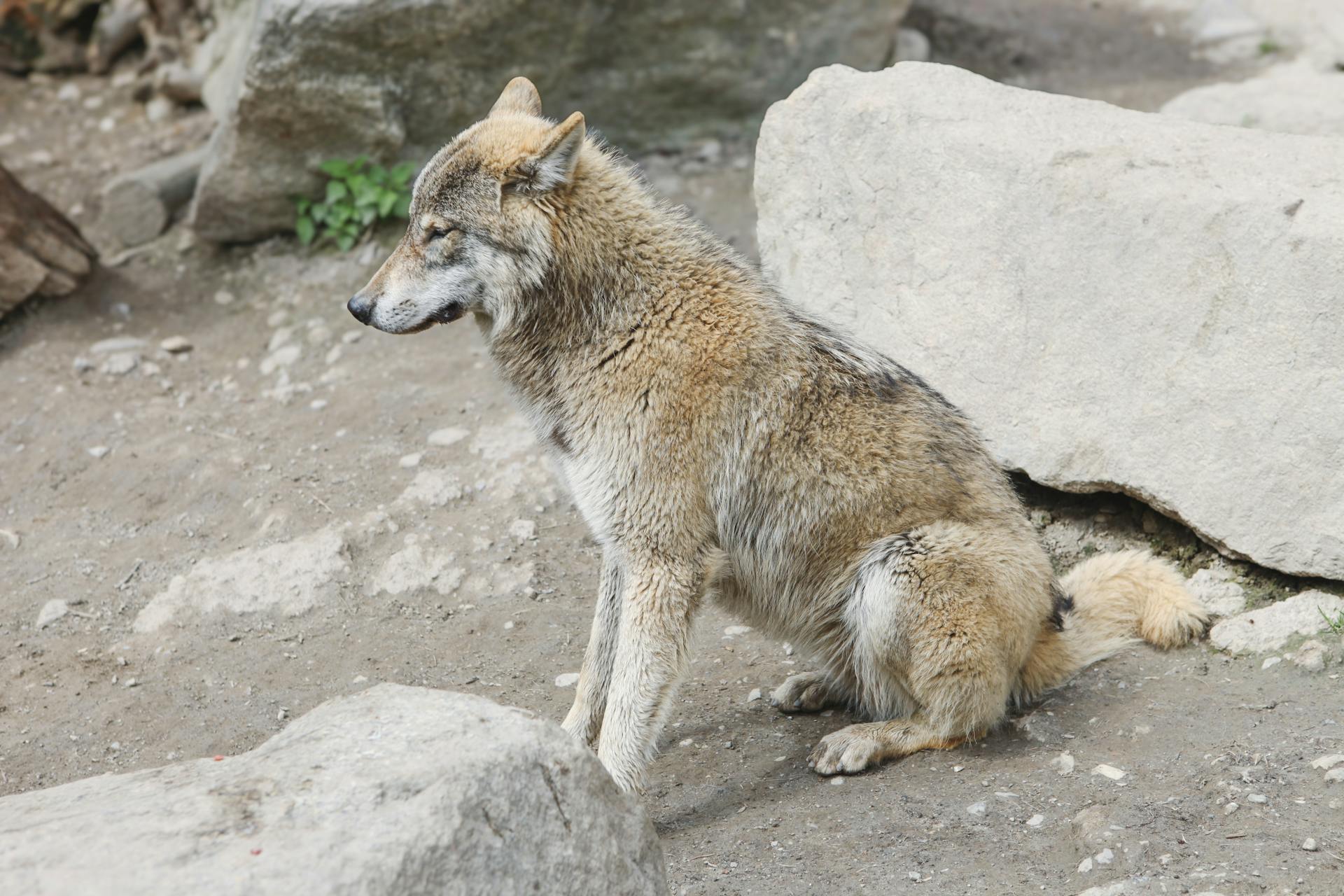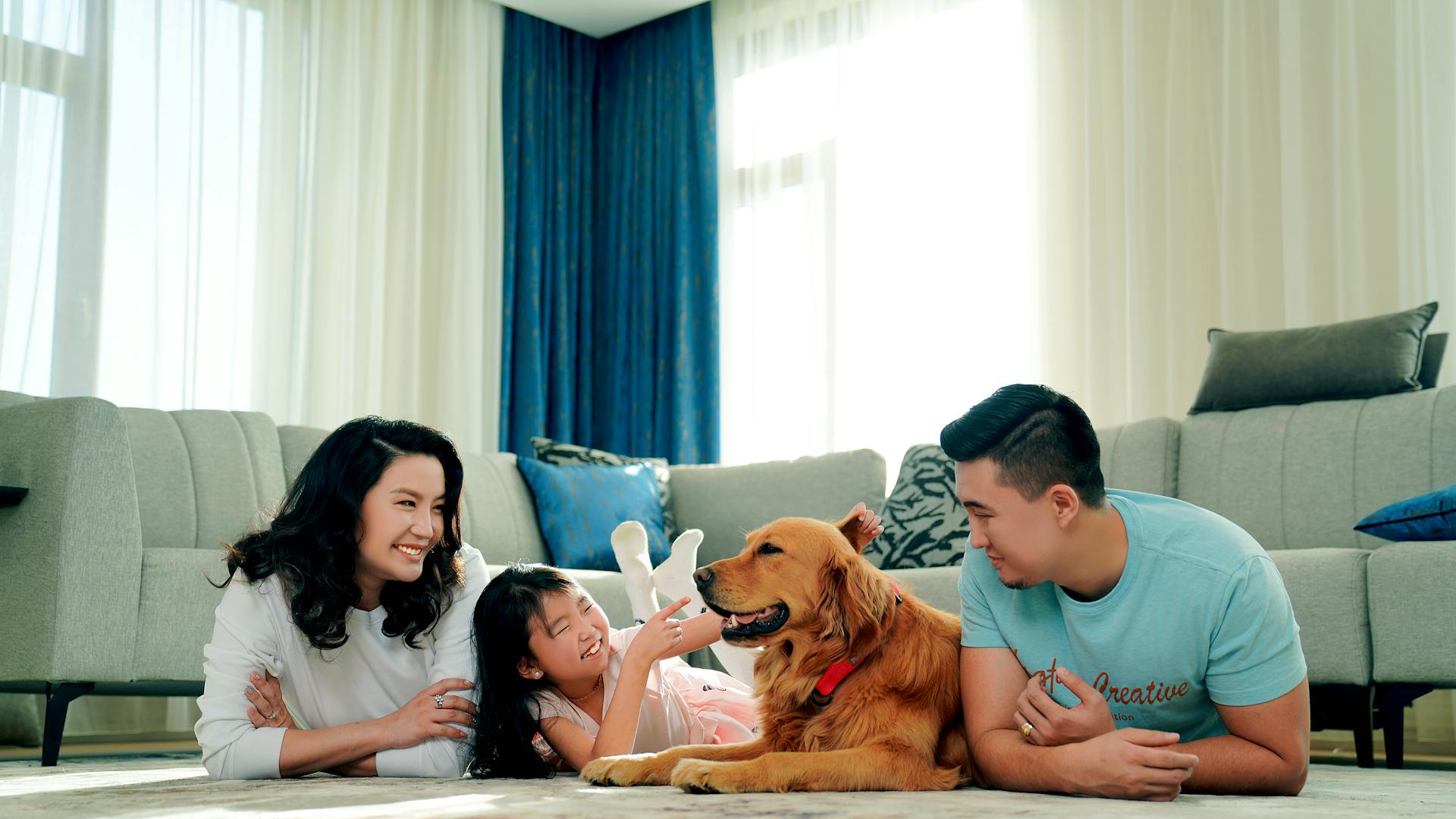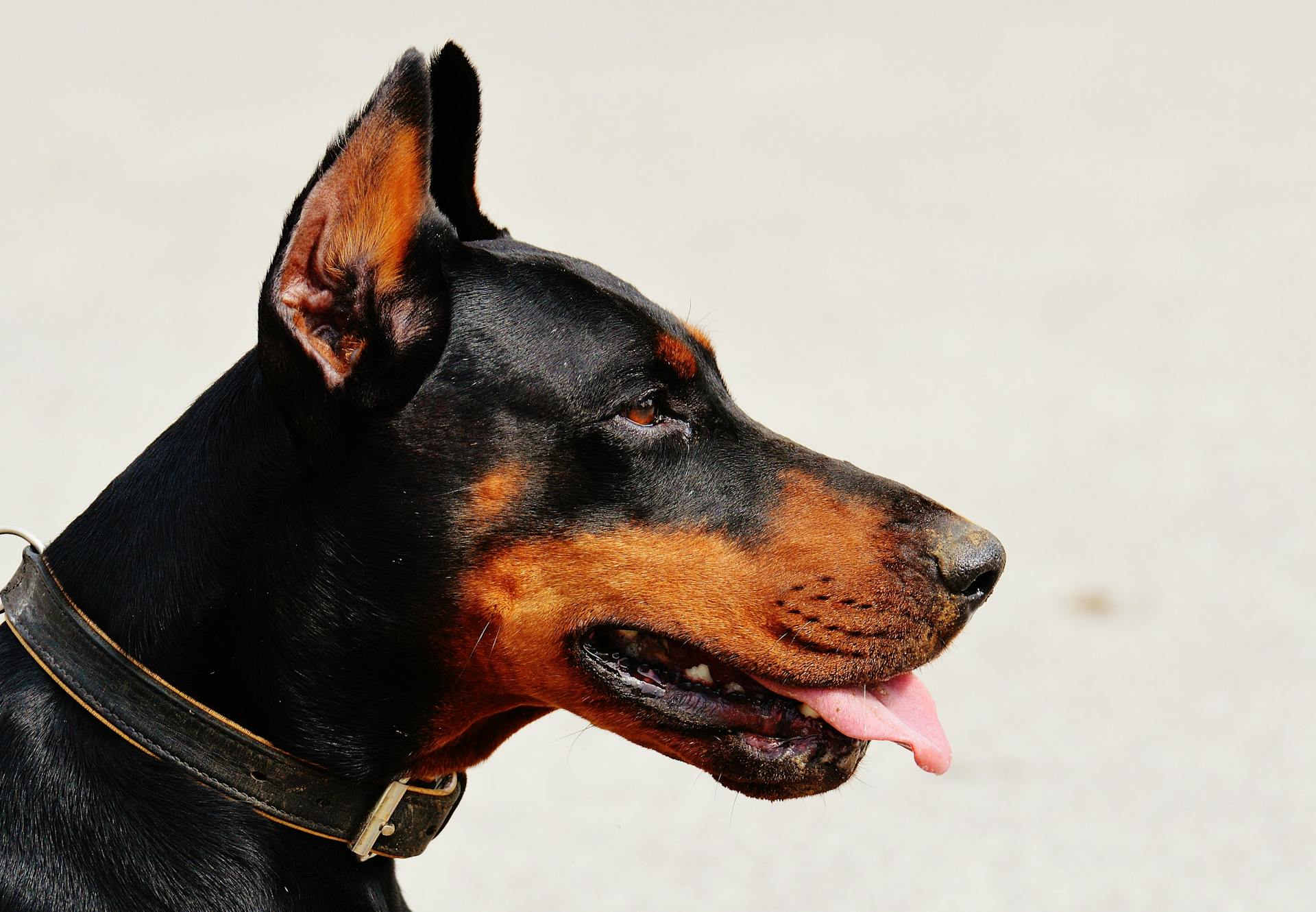
Resource guarding in puppies can be a challenging issue to address, but understanding its causes and recognizing the warning signs can make a big difference. Resource guarding is often a learned behavior that can start as early as 8-10 weeks old.
Puppies may guard resources due to fear or anxiety, and this behavior can be triggered by a variety of factors, including genetics, environment, and past experiences. Some puppies may be more prone to resource guarding due to their breed or temperament.
Recognizing the warning signs of resource guarding is crucial in preventing it from becoming a long-term issue. These signs can include growling, snapping, or showing teeth when a puppy feels threatened or scared.
Understanding Resource Guarding
Resource guarding is a common issue in puppies, and it's essential to understand its underlying causes to address it effectively. Unfortunately, taking things away from a growling dog can reinforce the guarding behavior.
Many people take resource guarding personally and punish the dog, but this approach often backfires and makes things worse. This is because punishing the dog can be seen as a threat to their resource, making them even more protective.
Recognizing that your puppy is acting instinctively when they guard things is crucial. They're not doing it to spite you, but rather to protect their resource. By understanding this, you can start to address the issue in a more positive and effective way.
Taking things away from a puppy who is growling is extremely common, but it's a mistake that can make resource guarding worse. Instead, you need to teach your puppy a strong "drop cue" to help them learn that humans approaching with a treat or toy is a good thing, not a threat.
By practicing the "drop it" cue with low-value toys and completely stopping the practice of taking things away from your puppy by force, you can start to address resource guarding. Removing access to things your puppy guards is also a good idea, and replacing them with low-value toys can help distract them from guarding behavior.
Identifying the Issue
Resource guarding in puppies can be a challenging issue to identify, but there are some key signs to watch out for. A stiffened body over an item is a common sign of resource guarding in dogs.
Any dog can be prone to resource guarding, regardless of breed or background. A dog from a breeder could have resource guarding issues, but a dog from the shelter may not.
Dogs who exhibit resource guarding behavior don't distinguish between people or animals who might take something away from them and those who are just passing by. They only care about what they think might be a threat to their items.
A hard stare, "whale eye" (when dogs show the whites of their eyes), lifting their lips, low growling, and baring their teeth are all signs of resource guarding in dogs. These behaviors are a response to the trigger, not the actual action.
Stopping Resource Guarding in Dogs
Resource guarding in puppies is a serious issue that can be challenging to address, but with the right approach, you can help your furry friend feel more comfortable and secure.
The first step in stopping resource guarding is to teach your puppy a strong "drop" cue, which helps them learn that letting go of an item is a positive experience. This can be done by practicing the "drop" command with low-value items before moving on to more valuable ones.
It's essential to recognize that resource guarding is often an instinctual behavior, and punishing your puppy for it can make the problem worse. Instead, try to understand what's triggering their behavior and address it accordingly.
To help your puppy see the arrival of a person as a positive experience, you can use small plastic boxes to store treats and leave them nearby. This way, when your puppy starts to guard an object, you can trade it with a treat from the box.
A crucial aspect of stopping resource guarding is to avoid taking things away from your puppy by force. This can create a negative association with letting go of items and make the problem worse. Instead, use high-value rewards like cut up hot dogs, cheese, or deli meat to encourage your puppy to drop the item.
Here are some key tips to keep in mind:
- Practice the "drop" command with low-value items before moving on to more valuable ones.
- Use high-value rewards to encourage your puppy to drop the item.
- Trade the item with a treat from a small plastic box to help your puppy see the arrival of a person as a positive experience.
- Avoid taking things away from your puppy by force.
By following these tips and being patient with your puppy, you can help them feel more comfortable and secure, and reduce the likelihood of resource guarding.
Why Dogs Resource Guard
Dogs resource guard because they feel their valued items are at risk of being taken away. This behavior is completely natural, and they start with mild behaviors to avoid real conflict.
Dogs may stiffen up, hover over a bowl, eat more quickly, or stare intently at the person or animal in question. These subtle warnings are often ignored or punished, leading the dog to resort to more vocal protests, such as growling or snapping.
Some common triggers for resource guarding in dogs include poor genetics/breeding and/or lack of early socialization, a history of harsh training methods, especially when started at an early age, and well-meaning owners taking items away or putting their hand in the dog's bowl from an early age.
What's in Dogs?
Dogs have a unique perspective on possession, where "real estate" can range from a nesting spot to a preferred human companion. This perspective is rooted in their instinctual nature.
Some dogs don't mind being petted, interrupted, or bumped into during mealtime or playtime, but others mind such disturbances very much.
From a dog's point of view, possession is nine-tenths of the law, as noted by Patricia McConnell, Ph.D.
Why It Happens and How to Stop It
Resource guarding in dogs is a common issue that can be caused by humans taking things away from them by force. This can lead to the dog associating the human's approach with a threat to lose their object or place. In fact, taking things away from a growling dog is extremely common, but it almost always reinforces the guarding behavior.
Many people take resource guarding personally and punish the dog, but this approach is often counterproductive. Instead, it's essential to recognize that the dog is acting on instinct and to address the issue in a positive and gentle manner.
To stop resource guarding, it's crucial to develop a strong drop cue and help the dog see the arrival of the person as a good thing, not a threat. This can be achieved by practicing the drop it cue with low-value item toys and removing access to things the dog guards.
A key part of this process is to trade the item taken away with something of equal or greater value, as recommended by the dog's guardians. This helps the dog understand that the human's approach is not a threat, but an opportunity for a trade.
Here are some common signs of resource guarding:
- Growling or snapping when approached while holding an object
- Barking or chasing after the object is taken away
- Guarding objects, people, or places
- Reacting aggressively to the presence of others
By recognizing these signs and addressing the issue in a positive and gentle manner, you can help your dog overcome resource guarding and build a stronger, more trusting relationship.
Common Questions and Concerns
Resource guarding in puppies can be a challenging issue to address. Some puppies may exhibit guarding behavior towards their food, but not towards other resources or people.
See what others are reading: Stop Dog Aggression
If you're introducing a new dog to your household, you may notice guarding issues arise. For example, Allison's comment highlights that her new dog only guards against the new dog, not against humans or the deceased dog.
You might wonder if a puppy's behavior is considered resource guarding if they only exhibit it in certain situations, like Amy's pup who barks, chases, and jumps after eating but doesn't mind being touched while eating.
A different take: Dogs Eating Sand
Knowing When to Ask for Help
Resource guarding in dogs can be a complex issue, and it's essential to recognize the signs early on. A change in behavior or aggressive behavior may indicate an underlying medical issue.
If you notice a change in your dog's behavior, it's a good idea to take them to the vet. This is especially true if they've developed resource guarding after reaching adulthood.
People who live in the household, especially children, must learn management skills to help the dog feel more at ease. This can be a crucial step in addressing the issue.
Avoid engaging in punishment or yelling at your dog, as this can worsen the behavior. Instead, focus on positive reinforcement and management techniques.
If your dog does bite, it's crucial to seek professional help immediately. A behaviorist can help determine the best course of action in an unbiased manner.
Why Is My Dog Sick?
If your dog is sick, it can be really stressful and worrying.
Dogs do what works, and if they feel their valued items are at risk, they may engage in behaviors to avoid losing them. This can include stiffening up, hovering over a bowl, eating more quickly, or staring intently at the person or animal in question.
Some common triggers for resource guarding in dogs include poor genetics or breeding, lack of early socialization, harsh training methods, and limited resources in the past.
A history of harsh training methods, especially when started at an early age, can lead to resource guarding in dogs. This is because they may feel the need to defend their valued items.
In some cases, dogs may have learned to resource guard due to well-meaning owners taking items away or putting their hand in the dog's bowl from an early age. This can actually make the problem worse.
Dogs that come from puppy mills or hoarding situations may have had limited resources in the past, leading to resource guarding behaviors.
Check this out: Crate Training Separation Anxiety
Sources
- https://www.akc.org/expert-advice/training/resource-guarding-in-dogs/
- https://www.doggoneproblems.com/loumi-stop-resource-guarding/
- https://rsdtraining.com/so-you-say-your-dogs-a-resource-guarder/
- https://peachonaleash.com/resource-guarding-why-it-happens-and-how-to-stop/
- https://www.akc.org/expert-advice/training/preventing-resource-guarding/
Featured Images: pexels.com


